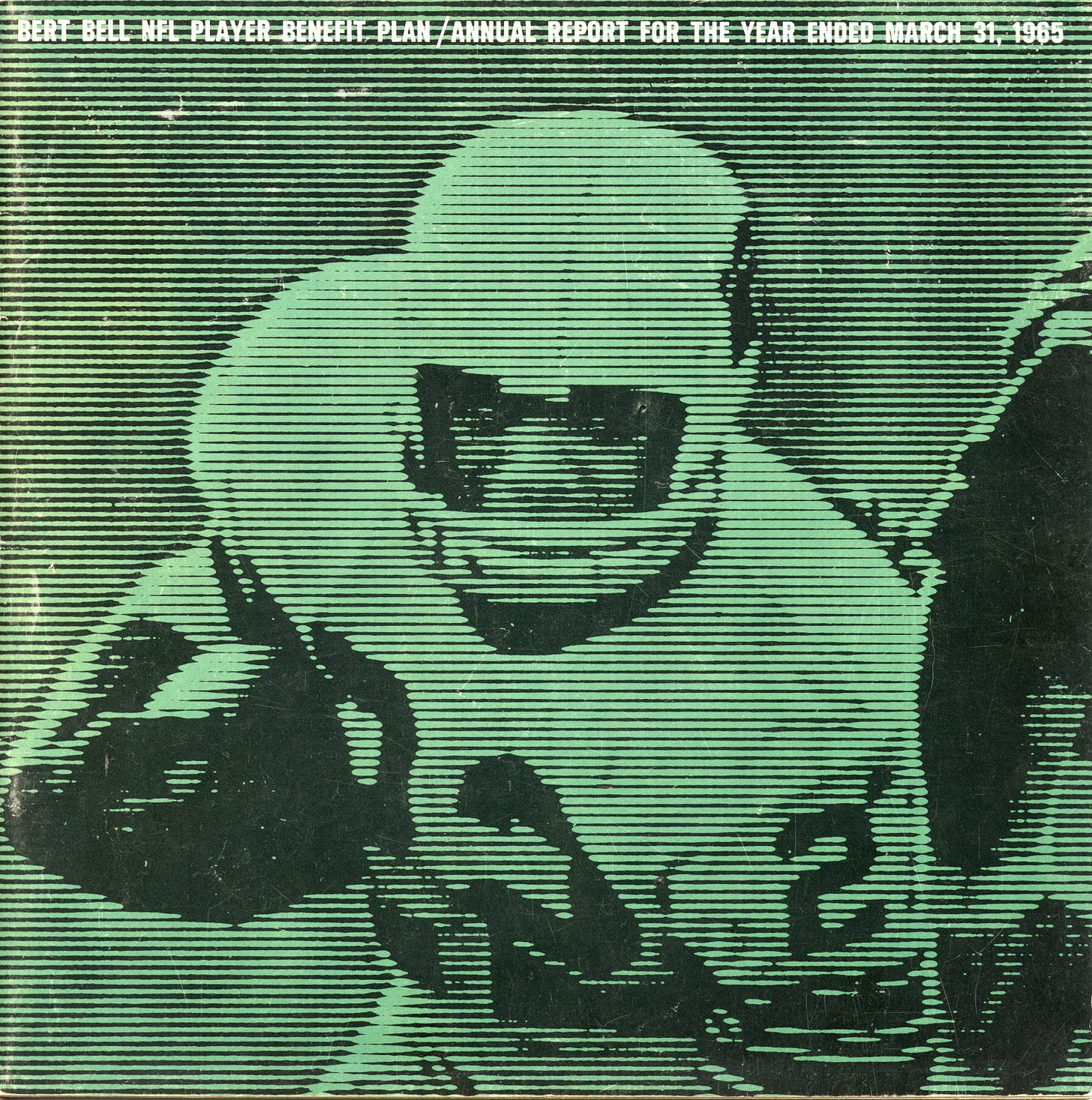Today's Tidbit... The 1965 NFL Player Benefit Plan
With all the money thrown around today to professional football players and the amateurs in the college ranks, it is worth remembering that the monies were less impressive in the past. NFL players did not have medical or life insurance benefits or a pension plan until 1959. Before that, they were on their own.
The players formed the NFLPA in 1956, and while the league did not formally recognize the union until 1968, the NFLPA made progress after appearing at the 1958 owners' winter meeting seeking a benefits plan. Though he lacked the owners' approval to do so, Commissioner Bert Bell agreed to investigate a plan and put one in place within the year. The plan offered players immediate eligibility for medical and life insurance and provided for a pension at age 65 for those with five or more years of service in the league. The plan only recognized NFL service after 1959, so the clock began ticking with the 1959 season, and those playing five, ten, or fifteen years from that point on earned pensions of increasing value.
Questions arose about funding sources since the NFL did not have the financial resources available today. There were only 12 teams in 1959, and the American Football League remained a twinkle in Lamar Hunt's eye, so there were not yet bidding wars by the television networks or for star players, but those would come. Still, of the 363 players selected in the 1957 NFL Draft, only 49 percent bothered to report to training camp. Half the draftees did not consider it worth their time.
Those who played in the 1959 through 1963 season became vested in the plan, as did others who followed. Yet, during the 1964 season, the NFLPA charged the NFL with a lack of transparency regarding the plan and its condition. Commissioner Pete Rozelle responded by sending a memo to all NFL players. The league followed the memo with a formal annual report for the year ended March 31, 1965. By 1965, the league had also developed a benefits plan for coaches and had added player representatives to the benefit plan board.
The 1965 report noted that the plan did not have funding in 1959, so the clubs carried that burden. Since then, the league’s expanded revenues from trading cards and Coke bottle caps increased tenfold, the championship game revenues doubled, and the Miami Playoff game between the division’s second-place teams saw a 50 percent boost.
Times have changed since then. A review of the firms in which the benefit plan had stock holdings shows many firms that no longer exist or have been usurped as blue-chippers.
Today’s plan includes an annuity, 401k, disability, tuition reimbursement, and other benefits, and players need 3 or more years of service to become vested. It also pays an average of $43,000 annually, starting at 55, with increased payments to those who played more recently since the funds going into the plan each year had increased.
Football Archaeology is reader-supported. Click here to buy one of my books or otherwise support the site.







